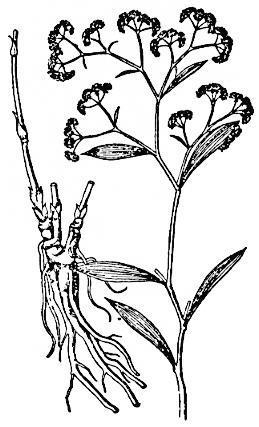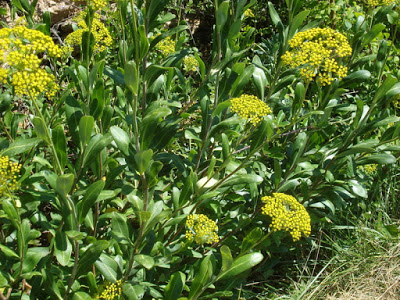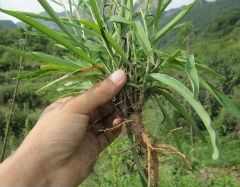Regulates immunity. Anti-inflammatory. Sedative. Analgesic. Antitussive.
Antipyretic. Antiviral.
- Heat in the lesser Yang (Shao Yang) stage of disease where the pathogenic factor
is at the half exterior half interior level, with
Scutellaria
baicalensis- Huáng Qín.
[6]
- Vertigo and dizziness, thoracic and costal pain, and menstrual irregularity
due to obstruction of the Liver Qi, with
Paeonia
lactiflora- Bai shao.
[6]
- Stiffling sensation in the chest, abodminal pain, poor appetite, and irregular
bowel movements, with
Citrus aurantium-
Zhi ke.
[6]
- Spleen deficiency and Dampness, a feeling of heaviness, sorenss and pain in
the extremities, a bitter taste in the mouth, and dryness in the throat, with
Notopterygium incisum- Qiang huo and
Ledebouriella divaricata- Fang feng.
[6]
- Intercostal pain due to Qi obstruction in the Liver channel, with
Citrus
tangerina- Qing pi.
[6]
- Liver Blood deficiency and obstruction: Emotional depression, a stifling sensation
in the chest, and irregular menstruation, use with
Mentha
arvensis- Bo he.
[6]
- Hepatitis and pain in the upper right quadrant, use with
Glycyrrhiza
uralensis- Gan cao.
[6]
[1] Barefoot Doctor's Manual- 1977 Prepared by the Revolutionary Health Committee
of Hunan Province. Original Chinese manual- Victor W. Sidel. Originally published
by Dr Joseph Quin and the Fogarty International centre, Bethdesda (1974). Madrona
Publishers Seattle Washington ISBN 0-914842-52-8
[2] A Complete English Dictionary of Medicinal Terms in Chinese Acupuncture
and Herbalism 1981- Henry Lu Chinese Foundations of Natural Health- The Academy
of Oriental Heritage, Vancouver, Canada.
[3] The Chinese Materia Medica A practical English- Chinese Library of Traditional
Chinese Medicine Publishing House of Shanghai University of Traditional Chinese
Medicine. Director Hu Ximing ISBN 7-81010-111-X/R-110
[4] Translation notes from Gary Seiford and Hocu Huhn- NSW College of Natural
Therapies. Sydney Australia (1982).
[5] The Pharmaceutical Plant Company Pty Ltd
ppcherbs.com.au
[6]
Chinese Herbal Medicine Materia Medica- Dan Bensky and Andrew Gamble-
Eastland Press 1986 Seattle Washington ISBN 0-939616-15-7
Images
1.
mdidea.com
2.
old.tcmwiki.com
3.
[1]
4.
tipdisease.com  HABITAT:
HABITAT: Bupleurum
chinense. 柴
胡 Chái
hú Bupleurum, Thorowax
Family: Umbelliferae
Bupleurum
chinense. 柴
胡 Chái
hú Bupleurum, Thorowax
Family: Umbelliferae


 HABITAT:
Found growing wild on sunny sides of sedge thickets.
HABITAT:
Found growing wild on sunny sides of sedge thickets.